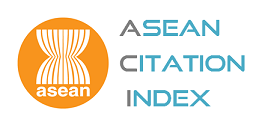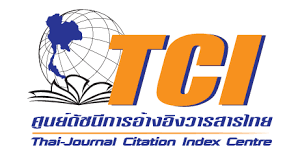Energy Development Assessment of Biomass Power Plant with Rice Husk Fuel Source in Thailand: Analysis of the Performance, LCOE and Carbon Emissions Reduction
DOI:
https://doi.org/10.69650/rast.2025.260099Keywords:
Biomass Power Plant, Rice Husk, Levelized Cost of Electricity, Electricity Power Generation, System Advisor Model (SAM)Abstract
This study was conducted from the technical and financial from two rice husk power plants in Thailand. A proposed rice husk power plants use Rankine cycle power plant as a combustion configuration for electricity generation. The simulation in this research uses the System Advisor Model (SAM) to study the plant performance and financial analysis. This research investigates by using input technical plant data, and the financial variable assumptions. The results in this research can be concluded that the LCOE (the Levelized cost of electricity) of the electricity generation from the rice husk power plants at 6.62-6.63 ¢/kWh. The potentials of CO2 reduction of rice husk plants in this study are 38,319 tons/year for plant A, and 53,923 tons/year for plant B. These results can be used as a useful tool for developing strategic plans for biomass power plants in Thailand.
References
Chungsangunsit, T., Gheewala S. H. and Patumsawad, S., Environmental Assessment of Electricity Production from Rice Husk: A Case Study in Thailand. International Energy Journal. 6(1) (2005) 47-55.
Pan, Y., Liu, L., Zhu, T. and Zhang, J., Feasibility analysis on distributed system of Chongming County based on RETScreen software. Energy. 130 (2017) 298-306, doi: https://doi.org/10.1016/j.energy.2017.04.082.
Abdelhady, S., Borello, D. and Shaban, A., Techno-economic assessment of biomass power plant fed with rice straw: Sensitivity and parametric analysis of the performance and the LCOE. Renewable Energy. 115 (2018) 1026-1034, doi: https://doi.org/10.1016/j.renene.2017.09.040.
Komrit, S. and Zabihian, F., Comparative analyses of solar photovoltaic, wind turbine, and solar photovoltaic and wind turbine hybrid systems: Case study of Thailand. Energy Conversion and Management. 293 (2023) 117479, doi: https://doi.org/10.1016/j.enconman.2023.117479.
Umar, M.S., Jennings, P. and Urmee, T., Generating renewable energy from oil palm biomass in Malaysia: The feed-in Tariffs policy framework. Biomass and Bioenergy. 62 (2014) 37-46, doi: https://doi.org/10.1016/j.biombioe.2014.01.020.
Al-Elanjawy, Y. A. H. and Yilmaz, M., Solar-assisted carbon capture process integrated with a natural gas combined cycle (NGCC) power plant—A simulation-based study. Processes. 12(3) (2024) 613, doi: https://doi.org/10.3390/pr12030613.
Ortega Ramírez, A. T., Reyes Tovar, M. and Silva-Marrufo, O., Rice husk reuse as a sustainable energy alternative in Tolima, Colombia. Scientific Reports. 14 (2024) 10391, doi: https://doi.org/10.1038/s41598-024-60115-5.
Steven, M., Vincent, D., Warrant, E. M., Determining appropriate feed-in tariffs rates to promote biomass-to-electricity generation in Eastern Ontario, Canada. Energy Policy. 63 (2013) 607-613, doi: http://dx.doi.org/10.1016/j.enpol.2013.08.076.
National Renewable Energy Laboratory (NREL). System Advisor Model (SAM), < https://sam.nrel.gov/> (2025).
Kami Delivand, M., Barz, M., Gheewala, S. H. and Sajjakulnukit, B., Economic feasibility assessment of rice straw utilization for electricity generation through combustion in Thailand. Applied Energy. 88(11) (2011) 3651-3658, doi: http://dx.doi.org/10.1016/j.apenergy.2011.04.001.
Thailand Greenhouse Gas Management Organization (TGO). Emission Factor 30-2565, <https://ghgreduction.tgo.or.th/en/download/120-tver-gwp-emission-factor/3377-emission-factor-30-2565.html> (2022).
Bank of Thailand (BOT). Monetary Policy Report September 2022. The Monetary Policy Committee, Ministry of Finance, Bangkok, Thailand, (2022) 6-42.
Abdelhady, S., Shalaby, M. A. and Shaban, A., Techno-economic analysis for the optimal design of a national network of agro-energy biomass power plants in Egypt. Energies. 14(11) (2021) 3063, doi: https://doi.org/10.3390/en14113063.
De Souza, L. L. P., Hamedani, S. R., Lora, E. E. S., Escobar Palacio, J. C., Comodi, G., Villarini, M. and Colantoni, A., Theoretical and technical assessment of agroforestry residue potential for electricity generation in Brazil towards 2050. Energy Reports. 7 (2021) 2574-2587, doi: http://dx.doi.org/10.1016/j.egyr.2021.04.026.
International Renewable Energy Agency (IRENA). Renewable power generation costs in 2018. ISBN 978-92-9260-126-3, International Renewable Energy Agency (IRENA)., Abu Dhabi, UAE, (2019) 69-83.
Uddin, W., Ayesha, K., Zeb. Haider, A., Khan, B., ul Islam, S., Ishfaq, M., Khan, I., Adil, M., and Jee Kim., H., Current and future prospects of small hydropower in Pakistan: A survey. Energy Strategy Reviews. 24 (2019) 166-177, doi: https://doi.org/10.1016/j.esr.2019.03.002

Downloads
Published
How to Cite
Issue
Section
License
Copyright (c) 2025 School of Renewable Energy and Smart Grid Technology (SGtech)

This work is licensed under a Creative Commons Attribution-NonCommercial-NoDerivatives 4.0 International License.
All copyrights of the above manuscript, including rights to publish in any media, are transferred to the SGtech.
The authors retain the following rights;
1. All proprietary rights other than copyright.
2. Re-use of all or part of the above manuscript in their work.
3. Reproduction of the above manuscript for author’s personal use or for company/institution use provided that
(a) prior permission of SGtech is obtained,
(b) the source and SGtech copyright notice are indicated, and
(c) the copies are not offered for sale.








